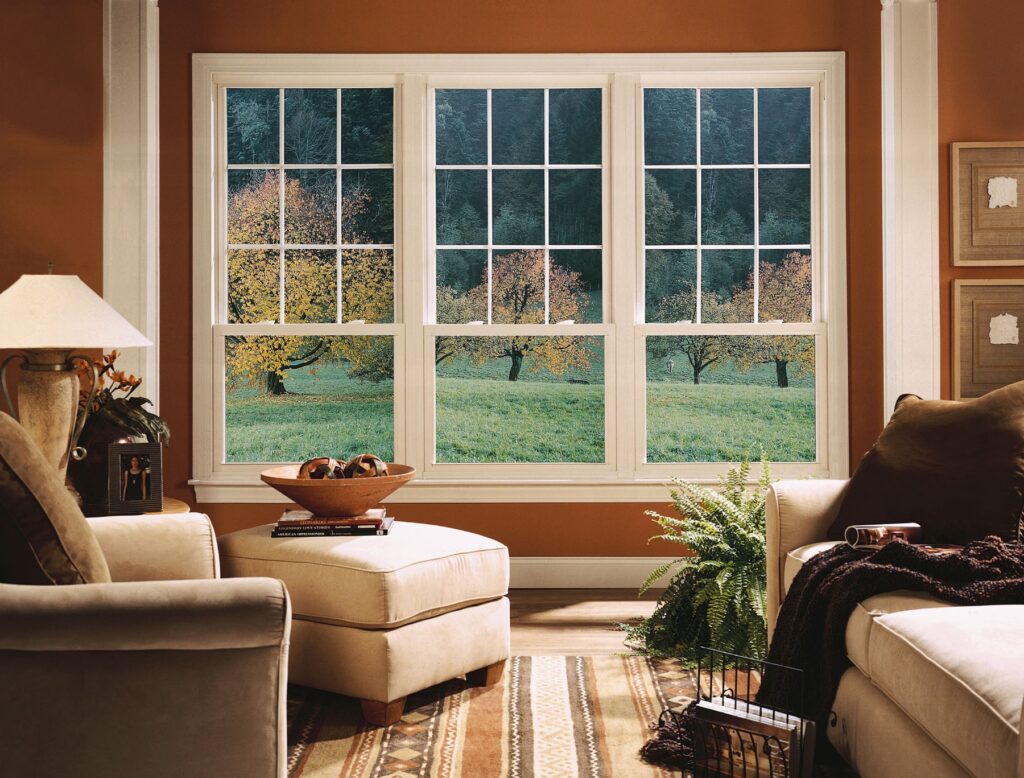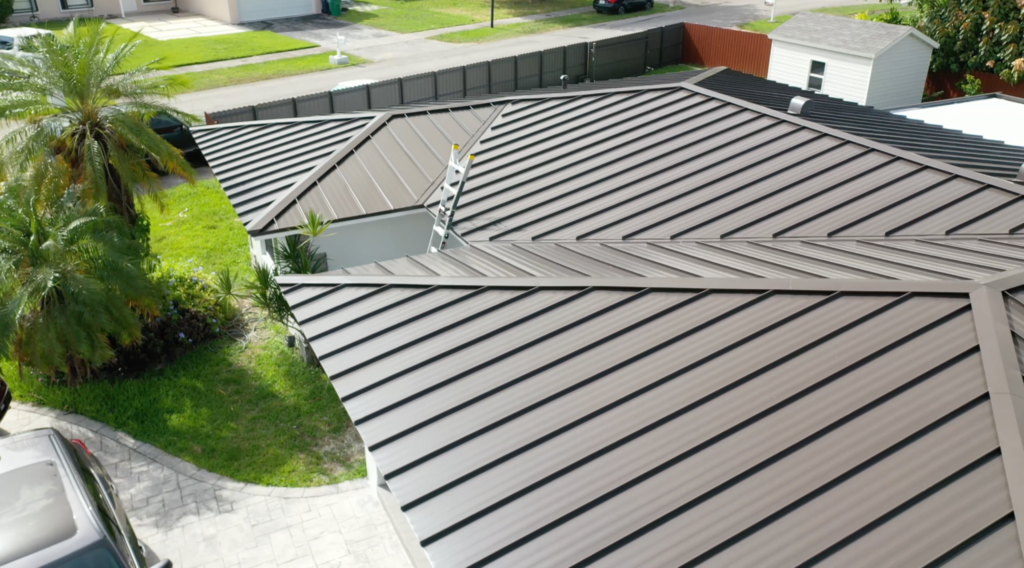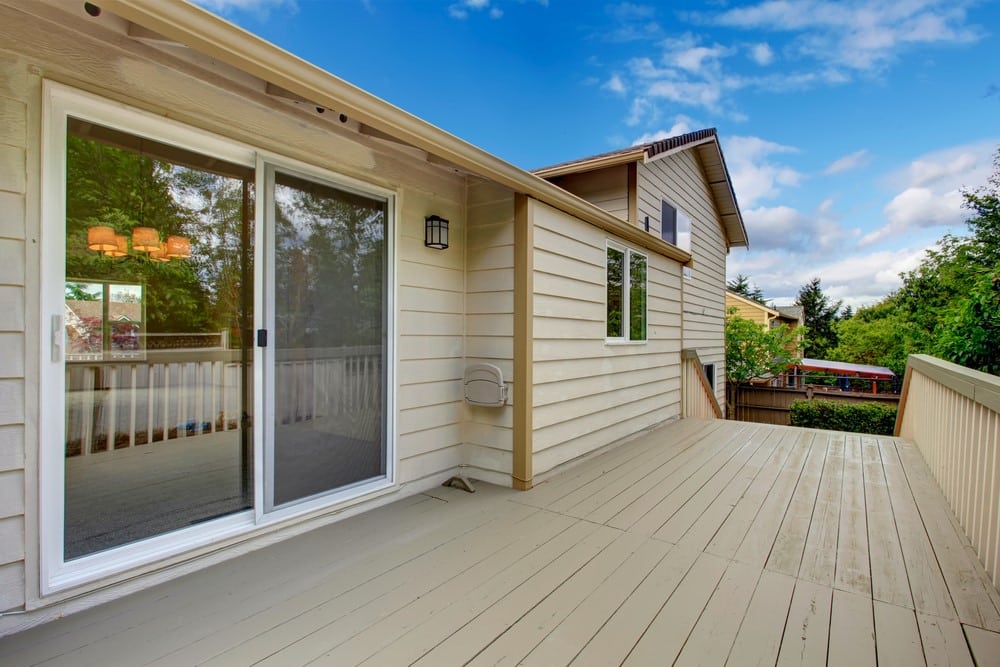
A clean home exterior not only enhances curb appeal but also helps protect your biggest investment. Cleaning it may seem like a big task, but it's easier than you think. Whether your siding needs a refresh or your windows could use a shine, this guide will show you simple, cost-effective ways to bring your home’s exterior back to life.
Assessing Your Home’s Exterior
The first thing you should do before exterior home cleaning is take a step back — literally. A thorough once-over of your house’s exterior helps you spot problem areas and create a plan of attack.
Start with the most accessible parts. Examine your siding to spot algae or mildew creeping up. If you notice peeling paint or cracks, that might hint at deeper moisture issues. Then, move to the windows, checking for cloudy or streaky glass.
Next, inspect the roof and gutters. If you see dark streaks on your shingles, it could be mold or algae, not just dirt. Gutter clogs can lead to overflows, which can become costly foundation damage if ignored for too long.
Finally, walk around your driveway, pathways, deck, and outdoor furniture. Are they stained, slippery, or covered in moss or dirt?
Once you have a clear idea of what needs work, you can tackle exterior house cleaning much more efficiently.
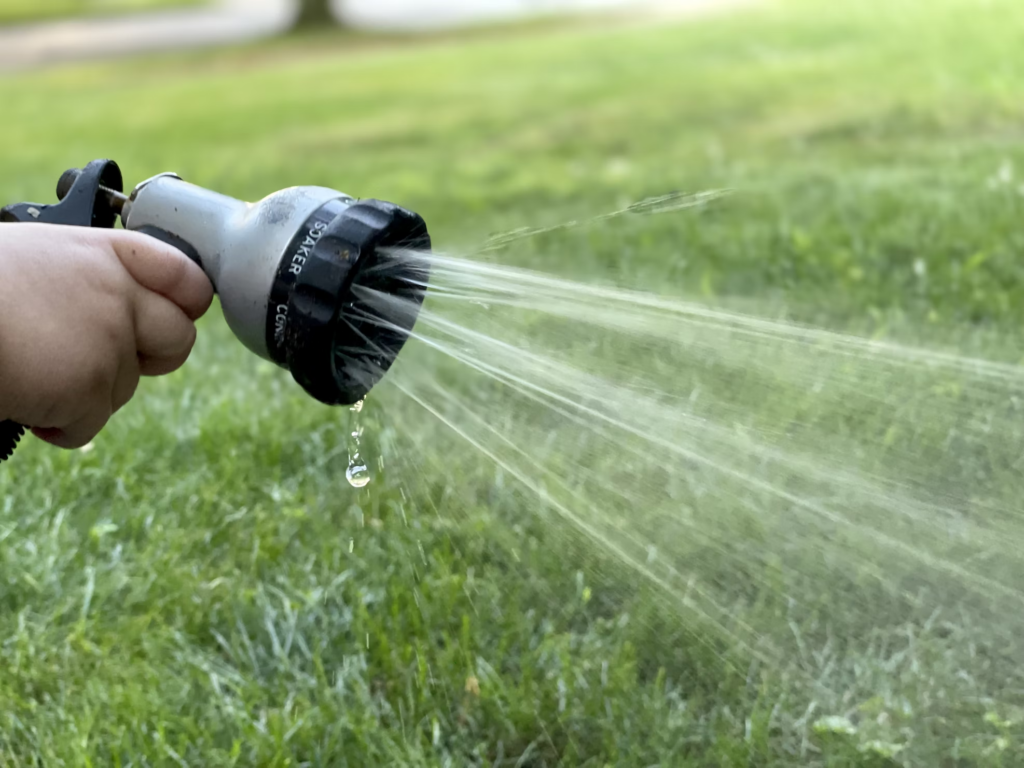
Cleaning Tools and Supplies Needed
The cleaning tools and supplies you need for exterior home cleaning depend on the area you’re taking on. The right tools will make the job easier and clean more effectively without causing damage. Here are some items you may need:
- Garden hose: It helps rinse off loose dirt and pollen.
- Pressure washer: High-pressure water can remove tough grime that regular scrubbing can’t. However, it should only be used on solid surfaces that can’t be damaged.
- Soft-bristle brush or long-handled scrubber: You can use these for siding, decks, and driveways.
- Gentle cleaning solutions: Choose between store-bought cleaners or eco-friendly cleaning solutions like soapy water, vinegar, or baking soda for stubborn stains.
- Squeegee and soapy water: It helps keep windows streak-free.
- Gloves: They are good at protecting your hands from chemicals.
- Mold and mildew cleaner: You can remove mold and mildew safely with a cleaner made from natural ingredients or use a commercial product specifically designed to tackle these issues. Just be sure to follow the instructions and test a small area first to avoid damage.
Step-by-Step Cleaning Guide
Breaking down your exterior home cleaning into several steps makes the task more manageable. You’ll want to start at the highest points first, like roofs and gutters, and work your way down to prevent re-soiling in lower areas. Here’s how to clean the outside of the house, focusing on one area at a time:
Roof
Roof maintenance is crucial to prevent algae, moss, and other buildups that can degrade shingles.
- Check the roof for dark streaks, which may mean you have algae or moss growth.
- Mix a 50:50 water and bleach solution, then apply with a sprayer.
- Let the solution sit for about 15 minutes, then rinse with a low-pressure hose.
For roof maintenance, you want to avoid pressure washing because it can damage shingles. Finally, you should also trim overhanging branches to prevent future growth.
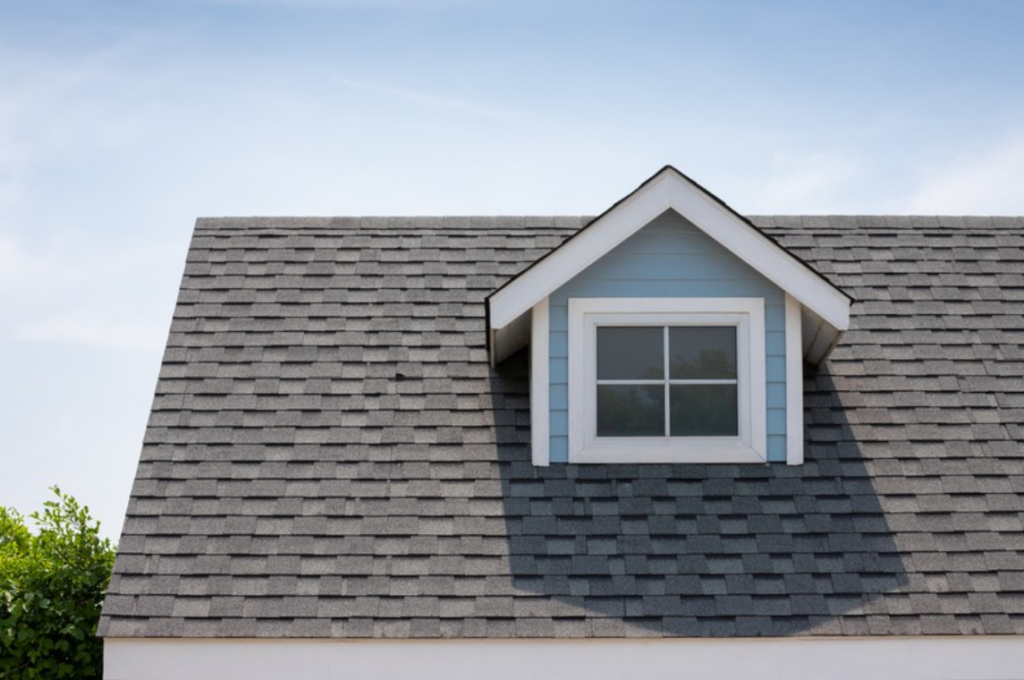
Gutters
Clogged gutters can lead to drainage issues that may damage your home’s foundation. Here are some gutter-cleaning tips:
- Set up a sturdy ladder and wear outdoor gloves for protection.
- Scoop out leaves and debris by hand or with a small shovel.
- Flush the gutters with a hose to check for clogs.
- If you spot mold or mildew, mix in equal parts water and bleach, then scrub the area.
- Pick up any removed debris from the ground
Siding
Various types of siding require different cleaning methods. To clean vinyl siding, follow these steps:
- Rinse the siding with a garden hose to remove loose dirt and debris.
- Mix mild detergent with water and apply it using a soft-bristle brush or sponge.
- For tougher stains, use a pressure washer on a low setting or a water-vinegar solution instead of soapy water.
- Scrub any stubborn spots gently and rinse with clean water.
Brick and stucco siding allows you to skip directly to the pressure washer:
- Apply a mild detergent solution with a spray bottle, then let it rest for a few minutes.
- Use a low setting on the pressure washer to remove surface dirt.
Windows
Clean windows improve your home’s appearance and let in more natural light. However, avoiding streaks can be tricky.
- Rinse the windows with water to remove any dust or debris.
- Mix warm water with dish soap and apply using a sponge or cloth.
- Squeegee to remove the soapy water, wiping it dry after each pass.
- If you’re still finding streaks, use a dash of white vinegar on a microfiber cloth.
- Finally, use a squeegee or microfiber cloth to wipe away any excess moisture.
- Be sure to clean your window frames and screens as well.
Patios, Decks, and Driveways
Different outdoor surfaces, such as patios, decks, and driveways, require specific cleaning approaches due to their materials and exposure to the elements. Patios often accumulate grime from foot traffic and spills, while decks can develop mildew due to moisture exposure. Driveways may be stained by leads and weather-related debris. On top of this, they are all made from different materials.
However, if you are looking for a generally effective cleaning approach, here it is:
- Remove furniture and sweep away loose debris.
- Mix a mild detergent with water and scrub using a stiff brush or a low-pressure washer.
- For oil stains on concrete, apply a mixture of baking soda and water, let sit, then scrub.
- Rinse thoroughly.
- Let the area dry completely.
- Replace the furniture or other outdoor items.

Outdoor Fixtures and Furniture
Your front or back yard may have many different fixtures and furniture that require specific cleaning approaches. Light fixtures collect dust and spiderwebs, mailboxes accumulate dirt and rust, and patio furniture often gets stained from exposure to the elements. Let’s address these common items to ensure the most efficient exterior home cleaning:
Light Fixtures
- Turn off the power to any electrical fixtures before cleaning.
- Remove any glass covers and wash them with warm, soapy water.
- Wipe down metal or plastic parts with a damp cloth.
- Dry thoroughly before reattaching covers and restoring power.
Mailboxes
- Wipe down the entire surface with warm, soapy water and a sponge.
- For metal mailboxes, apply baking soda, and then water to remove rust.
- Rinse with clean water and dry with a cloth to prevent water spots.
- Apply a coat of protective sealant if necessary.
Patio Furniture
- Brush off loose dirt and debris before applying any cleaners.
- Use warm, soapy water and a soft brush for plastic or metal furniture.
- For wood furniture, use a mild wood cleaner and a soft cloth.
- Rinse thoroughly and let air dry before using or storing.
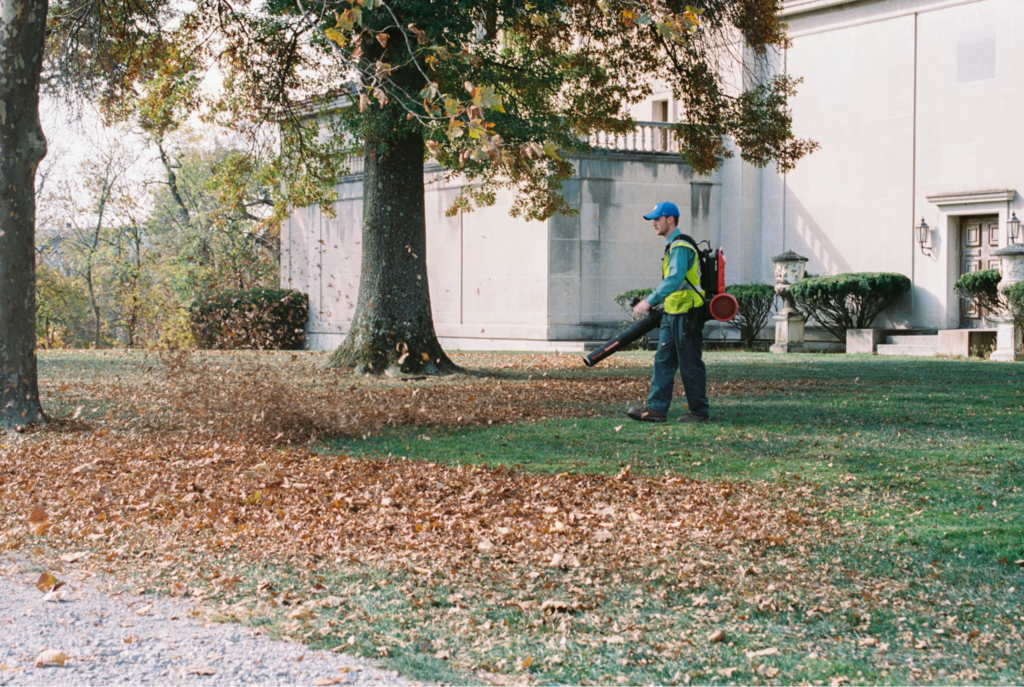
Seasonal Maintenance Tips
Keeping up with seasonal exterior maintenance is key to preserving your home’s curb appeal and preventing costly repairs. Each season brings unique challenges, so adjusting your cleaning routine can save you time, effort, and money.
Spring
After harsh winter weather, inspect and clean the outside of your home. Here’s how you can wash away the effects of winter and prepare for the warmer months ahead:
- Start with gently rinsing away any dirt buildup on your home’s siding.
- Scrub patios with a stiff brush and soapy water, and wash away any salt if you live in snowy parts of the country.
- Inspect gutters for damage from snow and ice, clearing any debris to prevent blockages.
- Check for cracks in the driveways and walkways — freeze-thaw cycles can cause cement damage.
- Trim overgrown trees and shrubs to reduce moisture buildup.
- Wipe down patio furniture to prepare for nice weather.
Summer
Summer brings a host of potential issues to your home’s exterior. Heat and humidity can lead to mold growth, fading surfaces, and clogged gutters from storms. Prepare your home for summer with these steps:
- Clean and seal wooden decks to prevent sun and moisture damage.
- Rinse off pollen buildup from siding and outdoor furniture.
- Pressure wash patios and driveways to remove stains before they return to the sun.
- Inspect your roof for loose or damaged shingles.
- Check for any standing water — buckets, planters, etc. — and dump them out. These make for nasty mosquito breeding grounds.
Fall
As temperatures drop and leaves fall, it’s time to prepare your home for colder weather. Addressing potential problematic exterior home cleaning areas now will help prevent winter-related damage:
- Clear leaves and debris from gutters to prevent water overflow and ice dams.
- Wash windows and remove dirt buildup before cold weather sets in.
- Inspect and repair caulking around doors to improve insulation.
- Store or cover patio furniture to protect it from rain, snow, and freezing temperatures.
- Rake and dispose of big piles of leaves.
Winter
Winter’s freezing temperatures and heavy snowfall can cause serious issues if you’re unprepared. However, taking these preventative steps can help protect your home’s exterior:
- Brush off excess snow from decks and walkways to prevent ice buildup.
- Use a roof rake to remove excess snow from the roof’s edge and ensure debris-free gutters.
- Check exterior pipes and faucets to insulate and prevent freezing and bursting.
- Watch for mold or mildew growth in shaded areas, as moisture from melting snow can accelerate buildup.
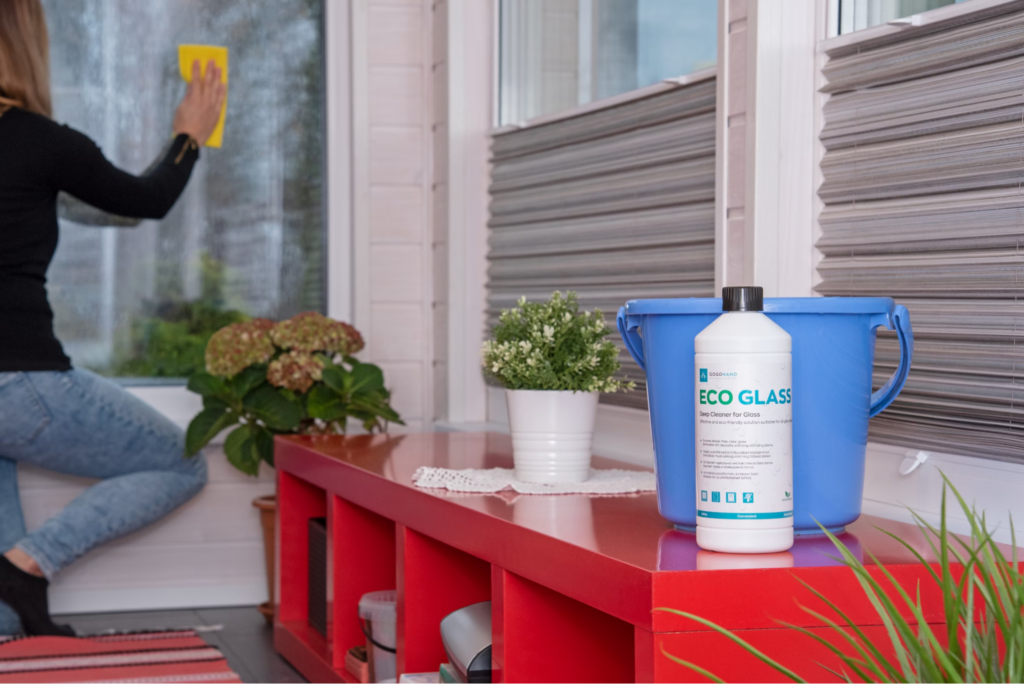
Environmental and Safety Considerations
To make your home look great while protecting yourself, there are a few things you should consider. Here are some safe home cleaning methods that keep you and your local ecosystems safe.
Eco-Friendly Cleaning Choices
Many commercial cleaners contain ingredients that can wash into storm drains, harming plants, wildlife, and waterways. For a safer clean, opt for biodegradable soaps, vinegar, or oxygen bleach.
You’ll also want to know where the water goes when pressure washing or scrubbing surfaces. When possible, direct the water away from flower beds, lawns, and storm drains.
Finally, exterior cleaning can use a lot of water. However, you can minimize waste by using a bucket and sponge for many jobs. If you’re using a hose, attach a nozzle for better control.
Personal Safety Tips
Of course, keeping yourself safe is also a top priority. Keep in mind the following:
- Always place ladders on a stable, level ground, and never overreach. If the job is too high, consider hiring a professional.
- When cleaning around outdoor outlets, light fixtures, or powerlines, keep these components dry and do not spray water directly on them.
- If you’re scrubbing mold or mildew or are using strong chemicals, wear a mask and gloves to avoid contact with your skin or lungs.
- Dispose of old cleaning rags, chemical containers, and debris responsibly.

Frequently Asked Questions
Do you still have questions about exterior home cleaning? Below are the most common answers.
How often should I clean the outside of my home?
You should clean the exterior of your home at least once or twice a year. High-traffic areas like driveways and patios may require more frequent cleaning. Be sure to check for dirt, mold, or stains after storms or seasonal changes to maintain its appearance.
Are there any safety precautions to follow when using a pressure washer?
Yes, there are. Always wear protective gear like goggles and closed-toe shoes when you use a pressure washer. Additionally, make sure you’re spraying from a flat surface, and never aim the spray at people or pets.
Can I use a pressure washer on all types of siding?
No, not all siding can handle pressure washing. Vinyl and brick usually hold up well, but wood siding can be damaged. Check your siding’s guidelines before proceeding with pressure washing.
What can I use instead of pressure washing my house?
Instead of pressure washing for exterior home cleaning, you can use a garden hose with a spray nozzle, mild detergent, and a soft-bristle brush or sponge. For tougher stains, a mixture of vinegar and water can help clean without damaging the surface.
What’s the most effective way to clean windows and avoid streaks?
The most effective way to clean windows without streaks is by using a mixture of water and a small amount of dish soap. Clean with a microfiber cloth or squeegee, wiping in a circular motion, and drying with a lint-free cloth.
What’s the best method to clean outdoor furniture?
For outdoor furniture, a mix of mild soap and water with a soft brush works wonders. Rinse thoroughly and let it air dry. For stubborn spots, a vinegar-water solution can help.
How do I remove mold and mildew from the exterior of my home?
Clean moldy spots with a store-bought cleaning solution, or make your own by mixing one part bleach with three parts water. Spray the area, let it sit for several minutes, then scrub and rinse well. Be sure you’re wearing proper safety gear during this process, as these chemicals are powerful.
Do I need professional help for exterior home cleaning, or can I do it myself?
While DIY exterior home cleaning is possible, hiring professionals ensures a thorough job and minimizes risks. Specialists have the right tools and know-how to handle most spaces safely and efficiently
Bottom Line
Regular exterior home cleaning improves its curb appeal and safeguards its structural integrity. If you’ve completed an outdoor cleaning and aren’t satisfied with the results, it may be time for a renovation. At FHIA Remodeling, we specialize in various remodeling services, from roofing to window upgrades, and more. Contact us today for a free consultation!
75% off Installation
18 months no interest no payments



